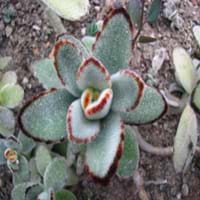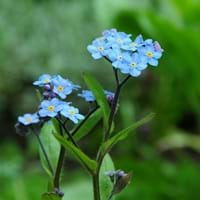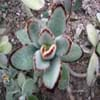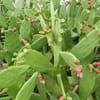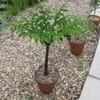Life Span
Perennial
Annual and Perennial
Type
Perennial, Shrubs
Flowering Plants, Shrubs
Origin
Madagascar, Not Available
Eastern Asia
Types
Not Available
Bigleaf hydrangea, Hortensia, Smooth hydrangea, Oakleaf hydrangea, Annabelle
Habitat
Hot climate regions, Temperate Regions
Fields, gardens, meadows, rocky outcrops, waste ground, yards
USDA Hardiness Zone
Not Available
Not Available
AHS Heat Zone
Not Available
8 - 1
Sunset Zone
Not Available
21,22
Habit
Not Available
Clump-Forming
Flower Color
Yellow green
Blue, White
Flower Color Modifier
Not Available
Bicolor
Fruit Color
Not Applicable
Not Available
Leaf Color in Spring
White hair and some brown spots on margins and at tips
Green, Gray Green
Leaf Color in Summer
Not Available
Green, Gray Green
Leaf Color in Fall
Not Available
Green, Gray Green
Leaf Color in Winter
Not Available
Light Green
Leaf Shape
Small oblong
Lanceolate
Plant Season
Spring
Spring, Summer
Sunlight
Full Sun
Full Sun, Partial Sun
Growth Rate
Not Available
Fast
Type of Soil
Sandy, Well drained
Loam
The pH of Soil
Neutral, Slightly Acidic, Slightly Alkaline
Acidic, Neutral
Soil Drainage
Not Available
Well drained
Bloom Time
Summer
Early Spring, Spring, Late Spring, Early Summer, Summer, Late Summer
Repeat Bloomer
Not Available
Yes
Tolerances
Not Available
Not Available
Where to Plant?
Container, Ground, Pot
Ground
How to Plant?
Leaf Cutting, Rooted stem cutting
Divison, Seedlings
Plant Maintenance
Medium
Medium
Watering Requirements
Average Water Needs, Medium, Water less during winter, Water more in summer
Do Not over Water
In Summer
Lots of watering
Lots of watering
In Spring
Moderate
Moderate
In Winter
Average Water
Average Water
Soil pH
Not Available
Acidic, Neutral
Soil Type
Not Available
Loam
Soil Drainage Capacity
Not Available
Well drained
Sun Exposure
Not Available
Full Sun, Partial Sun
Pruning
Remove damaged leaves, Remove dead branches, Remove dead leaves
Remove damaged leaves, Remove dead branches, Remove dead leaves
Fertilizers
All-Purpose Liquid Fertilizer
All-Purpose Liquid Fertilizer
Pests and Diseases
Red blotch
Red blotch
Plant Tolerance
Not Available
Drought
Flower Petal Number
Not Available
Single
Showy Fruit
Not Available
No
Edible Fruit
Not Available
No
Fragrant Flower
Not Available
No
Fragrant Fruit
Not Available
No
Fragrant Leaf
Not Available
No
Fragrant Bark/Stem
Not Available
No
Showy Foliage
Not Available
No
Showy Bark
Not Available
No
Foliage Texture
Bold
Medium
Foliage Sheen
Not Available
Matte
Invasive
Not Available
No
Self-Sowing
Not Available
Yes
Attracts
Butterflies, Mosquitos
Bees, Flies
Allergy
Not Available
Chest tightness, Diarrhea, Dizziness, Nausea, Vomiting
Aesthetic Uses
Showy Purposes
Beautification, Cottage Garden, Ground Cover, Showy Purposes
Beauty Benefits
Skin Problems
Not Available
Environmental Uses
Air purification
Air purification
Medicinal Uses
Arthritis, Chest pain, Ear ache, Fever, Headache, Laxative, Leprosy, Small pox, Stomach spasms, Strengthen gums, Treating fever, Wounds
Fever, Kidney problems, Urinary tract problems
Part of Plant Used
Leaves
Flowers, Root
Other Uses
Used As Food, Used for its medicinal properties
Culinary use, Used as Ornamental plant
Used As Indoor Plant
Yes
No
Used As Outdoor Plant
Yes
Yes
Garden Design
Not Available
Bedding Plant, Cottage garden, Edible, Hanging Basket, Wildflower
Botanical Name
KALANCHOE
Myosotis arvensis
Common Name
Kalanchoe Panda Plant, Panda Plant, Pussy Ears, Chocolate Soldier, Cocoon Plant, Velvet Leaf Kalanchoe, Plush Plant, White Lady, Panda-Bear Plant, Kalanchoe
Forget-Me-Not
In Hindi
पांडा संयंत्र
Forget-Me-Not
In German
Panda -Anlage
Forget-Me-Not
In French
installation de Panda
Forget-Me-Not
In Spanish
planta de Panda
Arce japonés
In Greek
φυτό Panda
Forget-Me-Not
In Portuguese
planta Panda
Forget-Me-Not
In Polish
Panda roślin
Forget-Me-Not
In Latin
Panda herba
Forget-Me-Not
Phylum
Vascular plant
Magnoliophyta
Class
Magnoliopsida
Magnoliopsida
Order
Saxifragales
Lamiales
Family
Crassulaceae
Boraginaceae
Genus
Widow's-thrill
Myosotis
Clade
Angiosperms, Core eudicots, Eudicots
Not Available
Tribe
Kalanchoeae
Not Available
Subfamily
Sedoideae
Not Available
Importance of Panda Plant and Field Forget Me Not
Want to have the most appropriate plant for your garden? You might want to know the importance of Panda Plant and Field Forget Me Not. Basically, these two plants vary in many aspects. Compare Panda Plant and Field Forget Me Not as they differ in many characteristics such as their life, care, benefits, facts, etc. Every gardener must at least have the slightest clue about the plants he wants to plant in his garden. Compare their benefits, which differ in many ways like facts and uses. The medicinal use of Panda Plant is Arthritis, Chest pain, Ear ache, Fever, Headache, Laxative, Leprosy, Small pox, Stomach spasms, Strengthen gums, Treating fever and Wounds whereas of Field Forget Me Not is Fever, Kidney problems and Urinary tract problems. Panda Plant has beauty benefits as follows: Skin Problems while Field Forget Me Not has beauty benefits as follows: Skin Problems.
Compare Facts of Panda Plant vs Field Forget Me Not
How to choose the best garden plant for your garden depending upon its facts? Here garden plant comparison will help you to solve this query. Compare the facts of Panda Plant vs Field Forget Me Not and know which one to choose. As garden plants have benefits and other uses, allergy is also a major drawback of plants for some people. Allergic reactions of Panda Plant are Not Available whereas of Field Forget Me Not have Chest tightness, Diarrhea, Dizziness, Nausea and Vomiting respectively. Having a fruit bearing plant in your garden can be a plus point of your garden. Panda Plant has no showy fruits and Field Forget Me Not has no showy fruits. Also Panda Plant is flowering and Field Forget Me Not is not flowering . You can compare Panda Plant and Field Forget Me Not facts and facts of other plants too.
